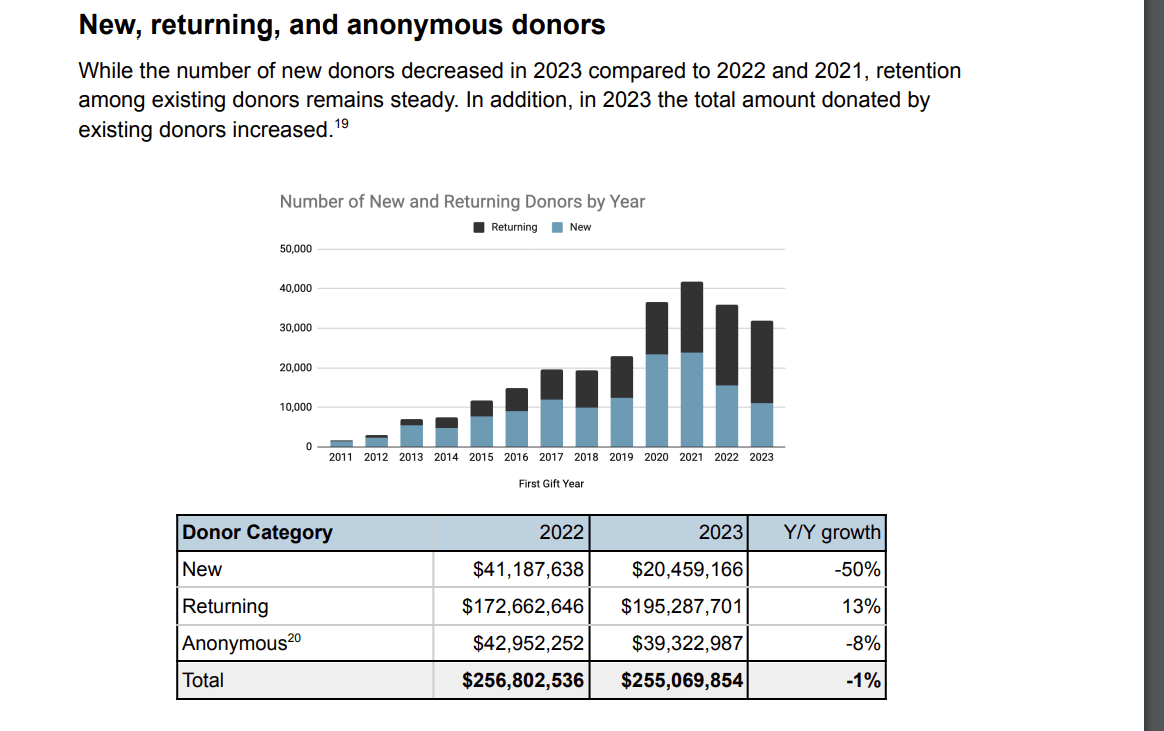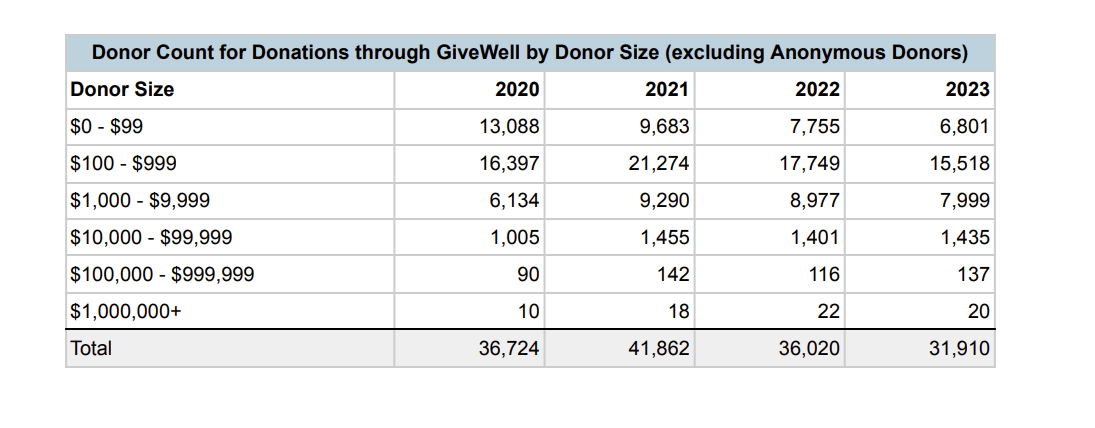In 2023[1] GiveWell raised $355 million - $100 million from Open Philanthropy, and $255 million from other donors.
In their post on 10th April 2023, GiveWell forecast the amount they expected to raise in 2023, albeit with wide confidence intervals, and stated that their 10th percentile estimate for total funds raised was $416 million, and 10th percentile estimate for funds raised outside of Open Philanthropy was $260 million.
| 10th percentile estimate | Median estimate | Amount raised | |
| Total | $416 million | $581 million | $355 million |
| Excluding Open Philanthropy | $260 million | $330 million | $255 million |
Regarding Open Philanthropy, the April 2023 post states that they "tentatively plans to give $250 million in 2023", however Open Philanthropy gave a grant of $300 million to cover 2023-2025, to be split however GiveWell saw fit, and it used $100 million of that grant in 2023.
However for other donors I'm not sure what caused the missed estimate
Credit to 'Arnold' on GiveWell's December 2024 Open Thread for bringing this to my attention
- ^
1st February 2023 - 31st January 2024





How much of the money raised by effectiv-spenden, etc. is a essentially pass through to Givewell? (I know Israel now has a similar initiative, but is in large part passing the money to the same orgs.)